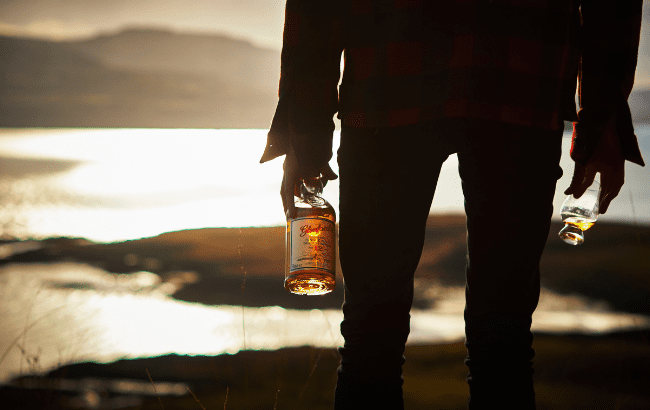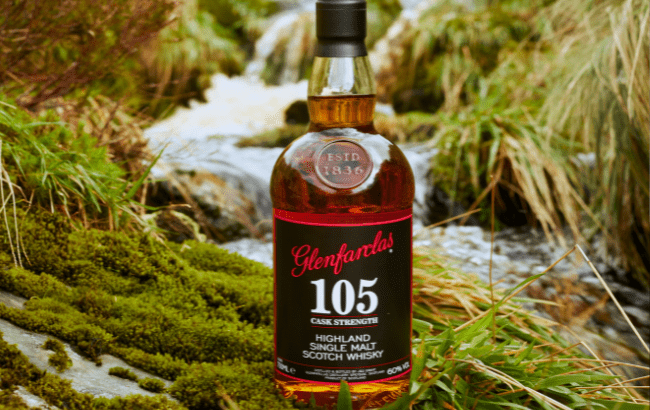Glenfarclas: the survivor
While other Scotch distilleries have come and gone, family firm Glenfarclas has kept distilling, quality being the hallmark of its longevity.

Few, if any, malt distilleries in Scotland can rival Glenfarclas in Speyside for its extraordinary stocks of old whisky. Given their value today, you might think that John Grant, the fifth‐generation chairman who has been with family‐run Glenfarclas for almost 50 years, is blessed with remarkable foresight. While other distillers were slamming on the brakes, going to a three-day week or even closing altogether during the ‘whisky loch’ years of the late 1970s and 1980s, Glenfarclas ploughed on regardless.
But James Simpson MW, managing director of Pol Roger portfolio, the brand’s agent in the country, believes it was simpler than that. “They distilled in the good times and in the bad times – they just kept going,” he says. “Whenever I go up there, there are always a few more warehouses being built, because it’s what they do – they distil, as long as they’ve got the rain and the casks.”
He continues: “The story goes that John buys the best Sherry casks going, and spends a fortune on them. And that’s a part of what makes Glenfarclas different.”
The youngest is currently bottled as a 10‐year‐old, and, like all the range, is given the minimum intervention with no chill‐filtering and no added colour with spirit caramel. In 1968 Glenfarclas launched its famous 105 cask‐strength bottling, pioneering a new category in Scotch, and it’s now its biggest‐seller internationally, according to Simpson. Five years later the distillery was one of the first in Scotland to open its doors to visitors.
Family affair
Glenfarclas has been in the same family since the original John Grant bought it for £511.19s.0d in 1865. A few decades later, to help fund expansion, the Grants agreed to sell half the business to the Pattison brothers of Leith, who were among the biggest blenders of their day. As Victorian investors piled into Scotch they created a classic speculative bubble, and when it burst the Pattisons went bust in 1898, causing a chain reaction that toppled a stack of whisky businesses.
Amazingly, Glenfarclas survived, but the experience galvanised the family’s resolve never to sell and never to enter into a Pattison‐style partnership ever again. There have been plenty of unsolicited offers in the meantime, all of them for a lot more than £511, but the Grants are not tempted, it seems. However, the family was in a precarious position since almost its entire production disappeared into blends that were usually owned by the big corporate players that dominate the industry. When their sales dipped – as they often did in this notoriously cyclical industry – demand for malts like Glenfarclas fell in equal measure.
In 1952, when as much as 96% of the distillery’s production was being sold to blenders, John’s father, George S Grant, began laying down stocks. In the 1960s, the Grant family was at the heart of a revolution in the world of whisky, as distilleries began to hone in on their own unique styles and bottle under their own single malt labels.

Since then, Glenfarclas pivoted to building its own brand by bottling the vast majority of its own whisky. It clearly helped that there was no significant band of outside investors clamouring for a return during the industry’s lean times, and this allowed the Grants to keep distilling. Today, they and their distributors are reaping the rewards.
“I think the fact we are selling good quantities of 25‐, 30‐ and 40‐year‐old whisky on a regular basis, plus the occasional single cask of something fancy, just helped Glenfarclas to remain family‐owned and independent,” says Simpson. He describes John Grant as “stubborn, but in a good way”. That stubbornness manifests itself in a commitment to age statements – 105˚ cask strength being the exception, while many rival distillers have been removing numbers from labels mainly because they simply don’t have the stocks. The company has also refused to embrace the fashion for cask finishes.
“We have just done a Port Pipe 20‐year‐old,” Simpson says, referring to a whisky that has spent its entire life in such a barrel. “And, people like that authenticity.” Most other companies would limit the time to months at the end to give the flavour a slight twist, and the brand’s PR team something to talk about.
The labels remaining virtually unchanged over the years is another example of the family’s belief in production over promotion. Simpson says: “Someone once put ‘marketing department’ on a door at Glenfarclas, and John took it down two days later, saying ‘we don’t have a marketing department’.” Yet, at the same time: “He has been vicious in terms of protecting that brand.”
Worldwide distribution
Probably his greatest achievement since joining the distillery in 1976 has been in building a network of international agents.
As Simpson says: “For a relatively small distillery in the middle of nowhere, it has extraordinary worldwide distribution. Its importers tend to be kindred spirits – similar family‐owned businesses that are into long‐term relationships. Even though we’ve been with them for 15‐16 years, we are relatively late to the world of Glenfarclas, which enjoys phenomenal loyalty from companies like Angove in Australia and Sazerac in the US.”
Back in Speyside, the distillery has stuck with its traditional direct‐fired stills, again possibly out of stubbornness and in spite of soaring gas bills “up by 300%”, says Simpson. “As a result, we’ve had to pass on some fairly terrifying price rises to customers.”
But at the top end, among the oldest and rarest single casks, it seems nothing can dent demand.
Related news
Golf drives Glen Moray push in UK travel retail
